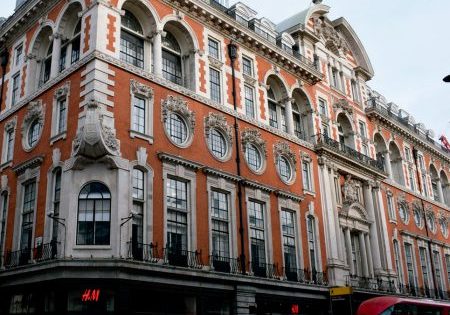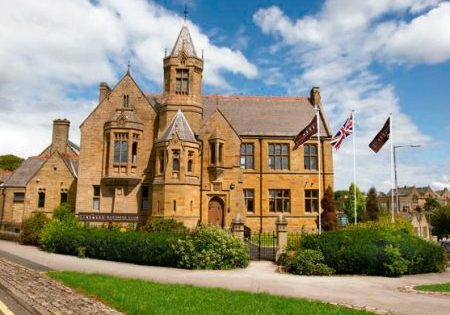Reminiscing on 50 Years in the Lift Industry
Jan 1, 2021

In this Readers’ Platform, your author looks back on his full and varied career.
by Tony Sawkins
In “Where Are They Now?” [Issue 105], I discussed some of the details of my 50-year lift industry career. Here, I’d like to add to them.
I first joined Otis in 1968. Although being a mate allowed me to enroll in the Otis Basic Construction Field Education Programs, which started in 1970 and finished in June 1971, I, unfortunately, didn’t complete the full program. I only attended eight of the 14 programs, but learned quite a lot of construction skills, which was most interesting and helpful when I was working as a mate on many repairs and modernisation projects at Otis, and then later when I progressed further as a fitter.
I left Otis in 1975, still as a mate, and joined, with my fitter Mick Sherriff, Apex Lift & Escalator Engineers Ltd. In 1976, I was duly made up to a fitter by Wally Phillips, the construction manager, and worked on repairs, modernisation and construction projects, including those on escalators and paternosters.
Mick and I started working on escalators as soon as we joined Apex Lifts. We mainly serviced J&E Hall types. This made sense because Apex founders Arthur Jenchner and John Wathen started out working for J&E Hall, first at Dartford and then at the Silex Street office/depot. They had history with J&E Hall clients and expertise with the equipment. They ended up taking over a lot of building contracts where J&E Hall lifts and escalators, as well as paternosters, were installed.
At the time, Bert Fowl, an Apex engineer, was about to retire. He carried out escalator maintenance and was the only
one who could fit the new British-made handrails called, if I recall correctly, “BTR.” Arthur asked if I would be interested in learning and taking over the job of splicing, vulcanising and fitting the handrails, which I duly agreed to. I was sent with Bert to the PAGUAG handrail manufacturing facility in Düsseldorf, Germany, for a week’s teaching course. It was very interesting, to say the least, including seeing the manufacturing of the handrails in one very long vulcanising machine.
Apex then used only PAGUAG handrails, and I replaced a lot of new handrails on J&E Hall escalators, which was a very hard, day-long process that could not be rushed. I replaced handrails at DH Evans at Oxford Street; Elys in Wimbledon; Bentalls in Kingston and Cheismans in Canterbury.
The DH Evans job in the mid-1980s was memorable and had us installing three new BREDA-manufactured escalators. The large crew had the challenge of craning up the escalators and bringing them in through a fourth-floor window. The final part of the mission was to manoeuvre them into position on two floors. I also had to renew the handrails of one of the short escalators.
I worked on some of the J&E Hall paternosters, but in the mid-1980s, due to a spate of accidents, all paternosters in the U.K. were temporarily shut down by the Health and Safety Executive until they were made safer. I remember one paternoster, in particular, that I worked on to make safer. I worked with a team of Apex engineers, along with John Wathen, on a four-floor paternoster in the Research Building at Lucas CAV on Warpole Road Acton, West London. The job basically involved the fitting of various infrared light rays, along with other safety works too long to itemise. After a thorough test and inspection, it was deemed safe to be put back into operation.
I left Apex Lifts in late 1988 after 14 years of service in the field. Then, I joined ERS Lift & Escalators as a supervisor of construction and modernisation. Being in a supervisory role was a new beginning for me. I gained a lot of experience running various modernisation and construction projects, and I dealt with various consultants and subcontractor labour. But I missed working in the field, and I left ERS after only a year. I became a self-employed subcontractor and went back to field work.
I worked on some of the J&E Hall paternosters, but in the mid-1980s, due to a spate of accidents, all paternosters in the U.K. were temporarily shut down by the Health and Safety Executive until they were made safer.
For 11 years, I performed subcontracting work, much of it for Guideline Lifts. I worked on many of their major contracts, carrying out the installation and modernising of lifts, but one job stands out – the Royal Garden Hotel in Kensington, which was comprised of an Otis four-car group (gearless 500 ft/min 10-person passenger lifts), and an Otis three-car group (500 ft/min 23-person passenger/goods lift). The existing DC generator driven machines were converted to SCR drive, with Swift Futura controllers fitted.
The Royal Garden Hotel project was a large job for me. It took nearly two years in two stages, and, unfortunately and sadly, when I was 75% complete with the last passenger/goods lift, on 29 November 1999, I had an accident. I was climbing up a ladder in the deep pit, and as I went to step up onto the basement landing sill, the ladder slipped away. I fell into the pit and broke my left leg. I had to be winched out of the pit and taken to hospital by ambulance. An X-ray revealed I had broken my leg in two places, and the breaks couldn’t be repaired by having a plaster cast fitted. Instead, I had to be put on traction for six weeks. A week before Christmas, after having a swab taken from the traction pin site at the bottom of my leg, I was informed I had gotten the nasty MRSA (staph) infection. I was put on strong antibiotics and spent a total of nearly three months in hospital. I gradually got back to being reasonably fit and went back to work subcontracting for Guideline Lifts.
On 2 January 2002, I joined Axis Elevators Ltd as a supervisor on construction and modernisation. I got on well and loved working for Axis Elevators, which was one big happy family of fellow colleagues, with a great managing director, Ian Rutherford. When I joined, there was just Ian and myself running the construction and modernisation projects. But, in 2010, due to the ongoing problems I had with my left leg, including further operations, I ended up working in the London office in an administrator and order purchasing role, which went very well.
In June 2012, I decided to retire from Axis. Most of the Axis London office personnel came to my combined retirement and 68th birthday party, held at my house and garden on June 23rd. Then, finally, in May 2013, I made the decision – after an infection in my leg was found to be not curable – to have my leg amputated above the knee. I was initially confined to a wheelchair, but in early 2014, I was fitted with a prosthetic leg, which helped me be a bit more mobile.
Not long after my leg amputation, Ian came to my house. They had not filled my role at Axis when I retired, and Ian asked if I would like to come back to work, carrying on doing what I did before, and working from home via logging into the Axis server. I agreed and started working again on 29th July. As you will imagine, there was a big sigh of relief from Ian and all my former colleagues, and all went very well carrying on in the administrative and purchasing role.
I got on well and loved working for Axis Elevators, which was one big happy family of fellow colleagues, with a great managing director, Ian Rutherford.
Finally, on 6th April 2018, I decided to retire for the second, and last, time from Axis, now part of the Express Lift Co Alliance. I had a great retirement sendoff at the London office the day before. I still keep in contact with Ian and a few of my fellow colleagues, and always look forward to receiving ELEVATOR WORLD UK so as to keep up with what is happening in the lift industry.
Get more of Elevator World. Sign up for our free e-newsletter.






